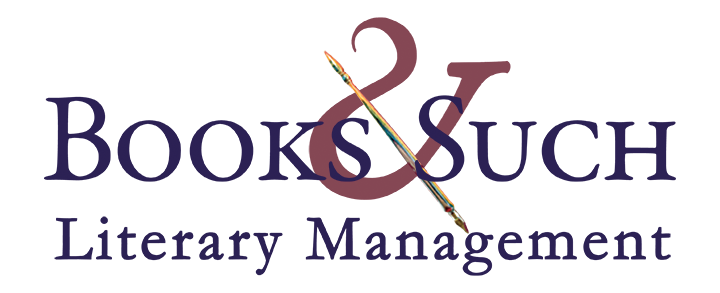Blogger: Cynthia Ruchti
Dancing dialogue does double-duty. It ramps up tension and reveals character.
How can dialogue move from “lying on the couch” to “dancing with the stars”?
Do away with most space-fillers.
They don’t accomplish the casual or hesitant feel you’re going for as well as you might expect.
WEAK: “Um…well…huh…you see…I wasn’t sure…um…that you’d let me in if I knocked.”
STRONGER: “I wasn’t sure”–David toed the carpet at his feet–“you’d let me in if I knocked.”
Use action beats to strengthen lines of dialogue and keep the reader rooted in which character’s talking.
WEAK: “If the apple harvest fails us again this year, we’re not likely to get another business loan,” he said.
STRONGER: Stan sliced into a Cortland apple and dug at a worm with the tip of his knife. “If the apple harvest fails us again this year, we’re not likely to get another business loan.
Pay attention to paragraphing rules related to dialogue.
Don’t let your reader get lost in a maze of characters and their words. Each character’s lines of dialogue and actions deserve a paragraph of their own. It’s one of the ways readers keep track of who’s doing the talking and who’s taking the action.
 CONFUSING: Sheila turned to look at her. “What’s that supposed to mean?” Ruby balled her hands into fists that pounded her thighs. “You’re jealous?” she said. “You?”
CONFUSING: Sheila turned to look at her. “What’s that supposed to mean?” Ruby balled her hands into fists that pounded her thighs. “You’re jealous?” she said. “You?”
CLEAR: Sheila turned to look at her. “What’s that supposed to mean?”
Ruby balled her hands into fists that pounded her thighs.
“You’re jealous?” she said. “You?”
(That’s making the assumption that Sheila is the one asking if the how silent Ruby is jealous. But here’s another possibility:)
Sheila turned to look at her.
“What’s that supposed to mean?” Ruby balled her hands into fists that pounded her thighs. “You’re jealous?” she said. “You?”
(In this case, Ruby’s doing all the talking. The dialogue is in “her” paragraph. But there’s another option:)
Sheila turned to look at her.
“What’s that supposed to mean?” Ruby balled her hands into fists that pounded her thighs.
“You’re jealous?” she said. “You?”
(There’s still another option, but you can see that how the paragraphs are divided can either clear or muddy the reader’s question, “Who’s saying that?”)
Ask yourself what each line of dialogue accomplishes.
If the answer is nothing, consider removing it or rewording. Dialogue should show us something about the characters, advance the plot, or either increase or decrease tension. Even small talk in books can be important. But only include the small talk if it is important.
Make dialogue feel more authentic by eliminating what’s already understood.
Many writers feel compelled to start every phone conversation with “Hello. How are you?” or “Hi, Gina. This is Shirley.” If Shirley is Gina’s best friend, they know the sound of each other’s voice. And today, it’s likely they know whose calling by the ringtone or caller ID.
WEAK: “Hello, Jack? This is Sam.”
“Hi, Sam. How are you doing?”
“Fine. And you?”
“Doing pretty well, all things considered. What can I do for you?”
“Jack, I need a favor. And it’s a big one.”
STRONG: “Jack? I need a favor. A big one.”
Create stronger character-revealing dialogue through what you don’t say.
Subtext is invisible, but it’s often the strongest communicator on the page.
WEAK: “I thought you’d be home for dinner at six. You promised,” Carol said.
“Yes, well, I know I promised. But you know how it is. I was delayed. I’m here now. What did you make?”
Carol sighed. “Beef stew and garlic toast.”
“Let’s eat.”
STRONG: “I thought you’d be home for dinner at six. You said six.” Carol glanced at the clock as if it might have lied to her before.
“Couldn’t be helped.”
“Is your phone acting up? Again?” Carol slammed the bowl of stew on the counter and grabbed her keys from the hook by the door.
“What did you make?”
Carol sighed. “A plan.”
Dialogue that dances, sings, propels the story forward can compel the reader to keep reading. What have you learned that has helped strengthen dialogue in your writing?
CLICK TO TWEET: How can dialogue move from “lying on the couch” to “dancing with the stars”?


 Complete Guide to Titling Your Book
Complete Guide to Titling Your Book
This is great advice, Cynthia. I’d like to add one more thing. I read once that the typical woman speaks about 50K words a day while a man speaks about 25K. From what I’ve seen in a mostly male career, I think that 2:1 ratio is pretty typical.
*When I write male dialogue, I try to keep it sparse compared to the female dialogue. That’s especially something I watch in my edits as I tighten a manuscript.
*It was a real treat to meet you at the ACFW last week. Congratulations on receiving your 2017 Carol award! I’m so glad to have you contributing here every week to help us all improve our writing.
So true, Carol, with texting too. I send my hubby five lines. He answers in one word.
Yes.
Milk.
OK.
The only dialogue in my book is between Jesus and me. In the book as in my life, Jesus uses no extra words, and they’re all for my own good.
Every…single word…for our own good!
Thank you, Carol. Yes. That is good advice. Depending on the personality of the male character, he may use lots of words if he’s nervous, guilty, or hiding something.
When I draft, I generally write whatever comes to mind, but in the rewrites I go through and try to focus on these elements. One thing I need to focus on is subtext. Great information Cynthia! Thank you for the reminder.
Every subject is so much deeper and broader than a short blog post can allow. But it gets us thinking.
Cynthia, thank you for these tips.I know dialogue is one area I need to work on. Your tips make so much sense. The one thing you shared that I haven’t really thought through before (but I should have clued in) is to make every line count.
*I especially liked your last example.
“What did you make?”
*”A plan.”
Love that!
Agreed on the last example. I also like that she “grabbed the keys” with no explanation why.
Yes, Damon. That was great too!
So often, our tendency is to answer word-for-word, like a boring, unchallenging volley of balls across the tennis net. It’s the well placed shot that makes us dig or stretch or show expert skill that makes a tennis match interesting. Observing dialogue in real life, it’s seldom that we exactingly answer what was asked.
“Are you heading into work?”
“Why?”
“You left your lunch on the counter.”
“Splitting headache.”
“Going to see a doctor about it?”
“Do we have any bleach?”
“What for?”
“Spilled something in the trunk of my car.”
I love these examples. 🙂
*My mentor told me I’m not allowed to use these words: Yes, No, Please. Thank you. You’re Welcome. I’m sorry. Ummmm. Hello. Good-bye.
*Thanks for sharing another great example of twisting dialogue and conveying so much. 🙂
Jeanne, I figure rules were meant to be broken
* “Ummm…you’re Rambo? John Rambo?” The reporter was hesitant, his voice shaking
* “Darkly, from the back of the cave: “Yes.”
* “Well, hello. I’m Darren Littlepen, from the Jerkwater Herald…I’m sorry to bother you, but I was wondering if you’d like to speak on the record?”
* “No.”
* Littlepen screwed his courage to the sticking place, and said, “Please?”
* There was movement, and suddenly a large muscular shadow was invading the reporter’s personal space. “Yeah. OK, a few words.”
* “Oh, thank you!” Littlepen’s knees were still quivering but he felt like a reborn Geraldo. “Now…”
* “You’re welcome. You get two words. Good. Bye.”
* And the reporter sailed from the cave mouth, propelled by a large boot and a larger desire to be left alone.
You’re a master, Andrew. 😉
* Banquo shook his head, a small smile giving ghastly light to his pallor. “I’s like I said, Mac B. We’re stuck, you and me, in Dialogue Hell.”
* Macbeth recoiled, as if slapped. “But I’m the only one supposed to be TALKING!”
* “We’re in it together, lad. I mean, do you REALLY think that anyone’s going to believe this ‘Avaunt, and quit my sight! crap? What’s an Avaunt? Nissan’s latest crossover?”
* Dropping his eyes and toeing the dirty flagstones…he had to kick some spoiled food out of the way, for such was castle-life…Macbeth replied, “SOME people appreciate our lingo.”
* “Yeah. there’s one lunatic in New Mexico, I think, actually talks like this. But the rest of the world? Dream on, wee bairn. We’re history.”
* Macbeth slumped, and tried to put his hands in his pockets, but the effect was spoiled by the fact that he’d forgotten that he didn’t have pockets. “I thought that was the point.”
Henrietta giggled. “Didn’t you find that absolutely hilarious, sweetheart?”
The corner of Henry’s mouth lifted. “Yeah.”
LOVED this, Andrew. Cackling.
You made me chortle aloud, Andrew. Well played!
I love this, Cynthia. Dialogue is so fun. And it feels like I never stop learning. I love using the em dash to insert a little action between dialogue. I have to be careful not to overuse it. 🙂 And to make dialogue dance … I want to write like that. *And like others, I’d love to congratulate you on the Carol award. You are a wonderful speaker and the shoes … 🙂 Priceless.
Thank you, Shelli. It was good to reconnect with you at the ACFW conference.
Great advice, Cynthia. Sounds a lot like the (in)famous “show don’t tell” rule we keep hearing about. Great examples, BTW.
Thanks, Jaxon. A writer’s imagination is set free when it locks onto the wonders of show-don’t-tell, or show-more-often-than-telling, or don’t-tell-if-you-can-show. 🙂
Ha! Never heard the variations to the rule. I like it.
I like “don’t tell if you can show” and “show more often than telling.” The simplistic “show don’t tell” can strip the rich details that make the scenes paint pictures in you mind that last for years.
I started out drama scripts, so dialogue comes relatively easily to me. It’s the stuff in-between that’s hard. When I meekly presented my first novel at Mount Hermon, a kind soul gently told me that my characters needed to do more than sit around having witty conversations. LOL!
That would be *writing* drama scripts. Sigh.
So many authors are the opposite, Jenny. They excel at narrative and find dialogue difficult. And yes, your dialogue does seem natural. Obviously, the Carol Awards judges feel you have strengths in both! Congratulations.
Great post. I needed that reminder about space-fillers. I have a love affair with ellipses. Hard to give them up . . .
Great examples. Well said.